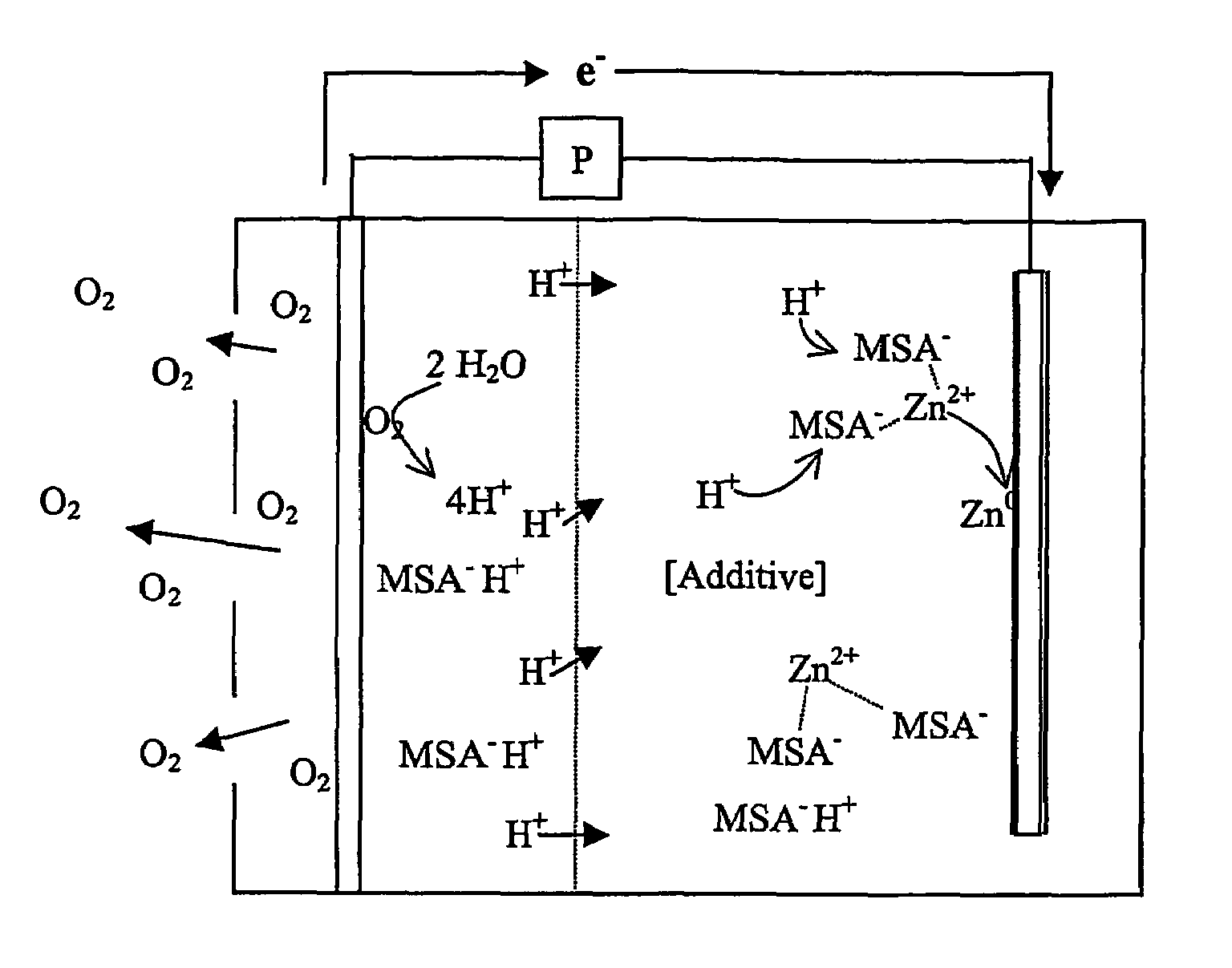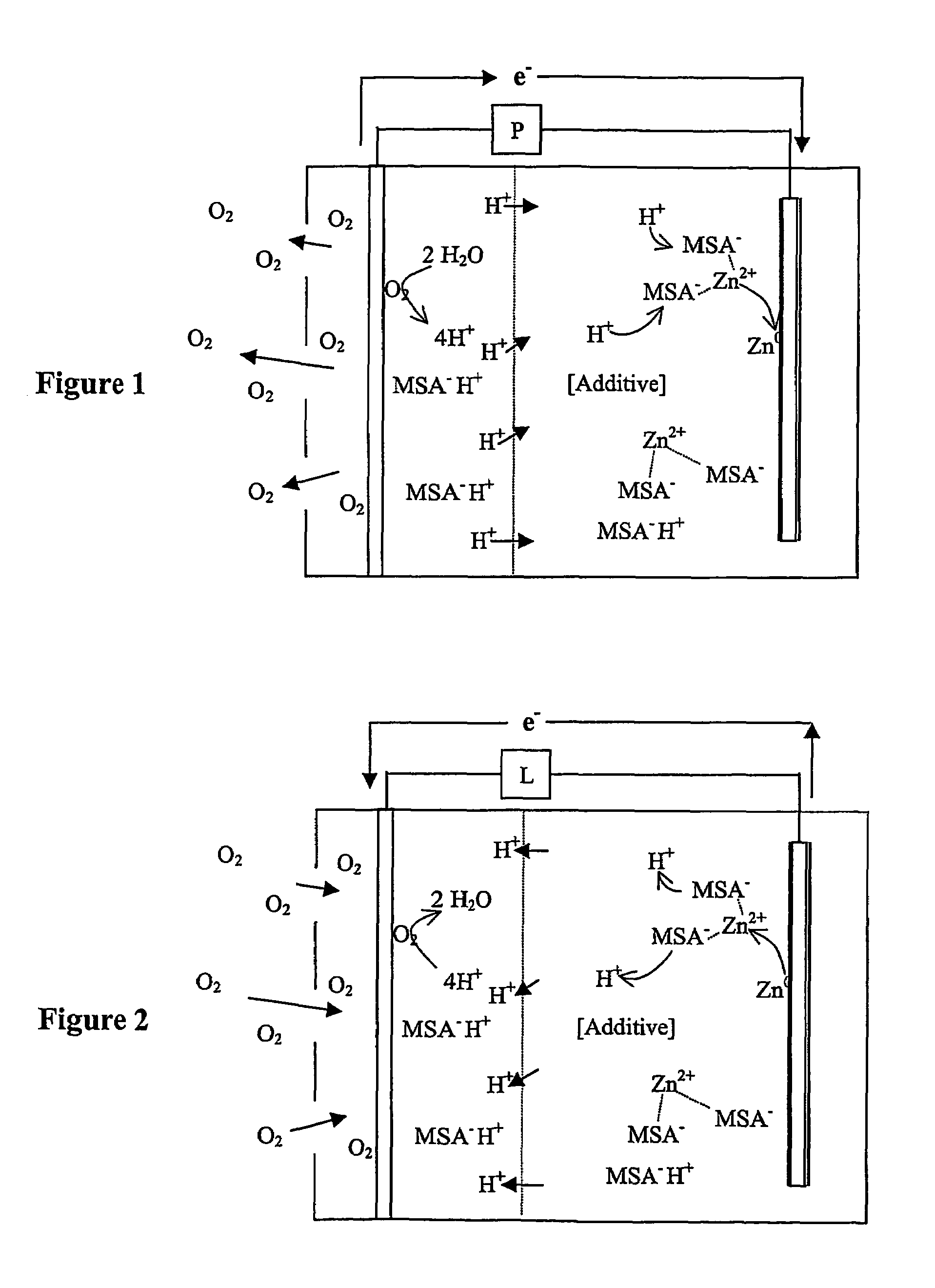Zinc air battery with acid electrolyte
a zinc air battery and acid electrolyte technology, applied in the field of batteries, can solve the problems of mercury oxide toxicity, increasing the difficulty of reducing the toxicity of mercury oxide, so as to reduce the formation of dendrites and maintain the battery performance.
- Summary
- Abstract
- Description
- Claims
- Application Information
AI Technical Summary
Benefits of technology
Problems solved by technology
Method used
Image
Examples
Embodiment Construction
[0021]The inventors have surprisingly discovered that zinc air batteries that include an acidic electrolyte may be operated over numerous charge / discharge cycles without substantial change in battery performance when the electrolyte comprises a compound that reduces dendrite formation.
[0022]As used herein, the term “acid electrolyte” refers to an aqueous or non-aqueous fluid in which the pH is less than 7.0, and in which Zn2+ ions are disposed (e.g., dissolved or in a complex that is dissolved). As also used herein, the term “static catholyte” means that the catholyte is enclosed in the cathode compartment without agitation by an agitator, wherein the term “agitator” refers to a pump or other fluid propeller that directly or indirectly circulates the catholyte in the cathode compartment. However, the term static catholyte expressly includes a catholyte that moves in the cathode compartment due to thermal effects and / or movement of the battery comprising the cathode compartment. Simi...
PUM
| Property | Measurement | Unit |
|---|---|---|
| open cell voltage | aaaaa | aaaaa |
| concentration | aaaaa | aaaaa |
| acidity | aaaaa | aaaaa |
Abstract
Description
Claims
Application Information
 Login to View More
Login to View More - R&D
- Intellectual Property
- Life Sciences
- Materials
- Tech Scout
- Unparalleled Data Quality
- Higher Quality Content
- 60% Fewer Hallucinations
Browse by: Latest US Patents, China's latest patents, Technical Efficacy Thesaurus, Application Domain, Technology Topic, Popular Technical Reports.
© 2025 PatSnap. All rights reserved.Legal|Privacy policy|Modern Slavery Act Transparency Statement|Sitemap|About US| Contact US: help@patsnap.com


